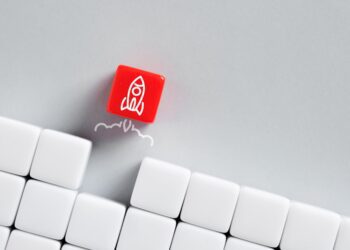How can executives drive industries and organizations to reverse course on climate change and lead a more sustainable economy? Adopting systems thinking can help with a successful transition to a low-carbon future.
Spurred on by the climate crisis, the world has begun moving—unevenly but inexorably—toward a low-carbon future. This shift is every bit as transformative as the initial adoption of fossil fuel–powered machines and electricity. And the move toward “net zero”—emitting no more greenhouse gases than are removed1—needs to unfold with an urgency that exceeds previous industrial revolutions. The global economy is being remade, and every business, government, organization, and individual has a role to play in accelerating this transition.
A growing array of businesses and governments are, indeed, confronting climate change, announcing emissions goals and climate initiatives daily. While worthy in and of themselves, these efforts often are shorter-term and focused narrowly on the organization’s own operations. What’s needed is a more holistic system of systems approach that unlocks critical opportunities in the transition to a low-carbon economy by working at the intersection of emerging low-carbon initiatives.
The system-of-systems approach recognizes that existing industries will be reconstituted as a series of complex, interconnected, emissions-free systems—energy, mobility, industry and manufacturing, agriculture and land use, and negative emissions. Government, finance, and technology can play a catalytic role to underpin and enable the emergence of those systems. A diverse set of societal and economic forces—from fluid and shifting consumer preferences to the rise of stakeholder capitalism and growing demands for climate action now—can drive the transition.
Accelerating progress toward net-zero emissions and tackling our toughest climate challenges will require extraordinary levels of collaboration and coordination across emerging systems. These efforts should be built around a global stewardship ethos that envisions us not as owners, managers, or consumers but as caretakers of our organizations, our communities, and our planet. What lies ahead of us is daunting, and the stakes could not be higher. But we confront this challenge knowing what needs to be done and having most of what is needed to do it. Now, in this decisive decade, we must act, with urgency and boldness and care for our common home.
Why we should take a systems view of the emerging net-zero economy
Many business and government leaders around the globe have steadily moved climate change higher on their agendas. Hundreds of companies have set science-based targets consistent with the Paris Agreement, publicly committed to using 100% renewable energy, or made other climate pledges. And yet progress, as measured by declining emissions, has thus far been negligible, even considering the year of COVID-19 lockdowns. The United Nations’ 2020 Emissions Gap Report notes: “Carbon dioxide emissions are predicted to fall up to 7 per cent as a result of the pandemic slowdown. But this dip only translates to a 0.01°C reduction of global warming by 2050.” The report calls existing pledges “woefully inadequate.”
Many factors account for this dismal report card, but part of the problem lies in many organizations’ tendency to approach the climate challenge through a lens focused narrowly on the single business or industry. The typical sustainability road map looks almost exclusively inward, taking stock of the existing emissions footprint, setting mitigation targets, and then developing a plan to achieve them; current leading commitments may pledge to influence suppliers or reduce so-called Scope 3 emissions (indirect emissions across the value chain).
These approaches ignore a critical, overarching point: The transition to a low-carbon economy demands the synchronized transformation of multiple, interdependent systems. An electrified vehicle fleet significantly addresses climate change only if it is charged with clean, renewable electricity and manufactured with circular, low-waste processes using sustainably extracted raw materials. It is only by adopting a more comprehensive view of the emerging low-carbon economy that we can begin visualizing the critical connection points and contingencies, in turn allowing organizations to work collaboratively to remove barriers, reach critical tipping points, and accelerate adoption of some of the most impactful climate solutions. Isolated initiatives miss the essential synergies in this transition.
The key is in harnessing a shift that has been underway for years: Traditional industry lines have been blurring and giving way to new business ecosystems comprising diverse sets of participants. The race to address climate change only accelerates those shifts and brings them to new corners of the economy. The complex and interconnected systems that are emerging may resemble yesterday’s industries, but under the surface, they will likely be driven by the rapid adoption of new technologies, deep shifts in operating processes, and the transformation of business models, with entirely new sets of players working together in novel ways. Sources of value creation in the low-carbon economy will shift profoundly, as will capital allocations. How and when these evolve will vary by system, but in every case, they offer tremendous opportunities for both legacy incumbents and disrupters if they’re proactive in helping direct the market toward a net-zero economic future.
By Scott Corwin & Derek M. Pankratz
Read the full article at deloitte.com












